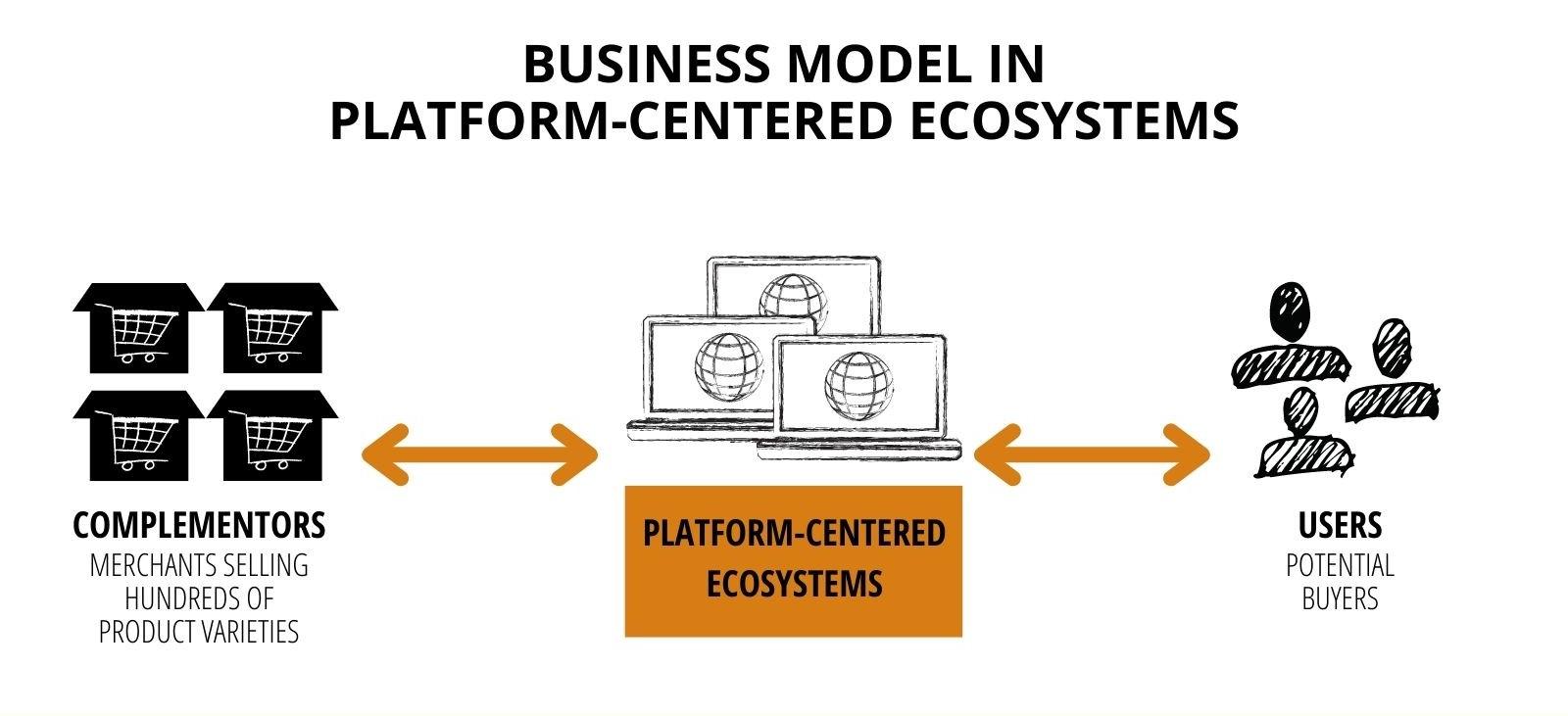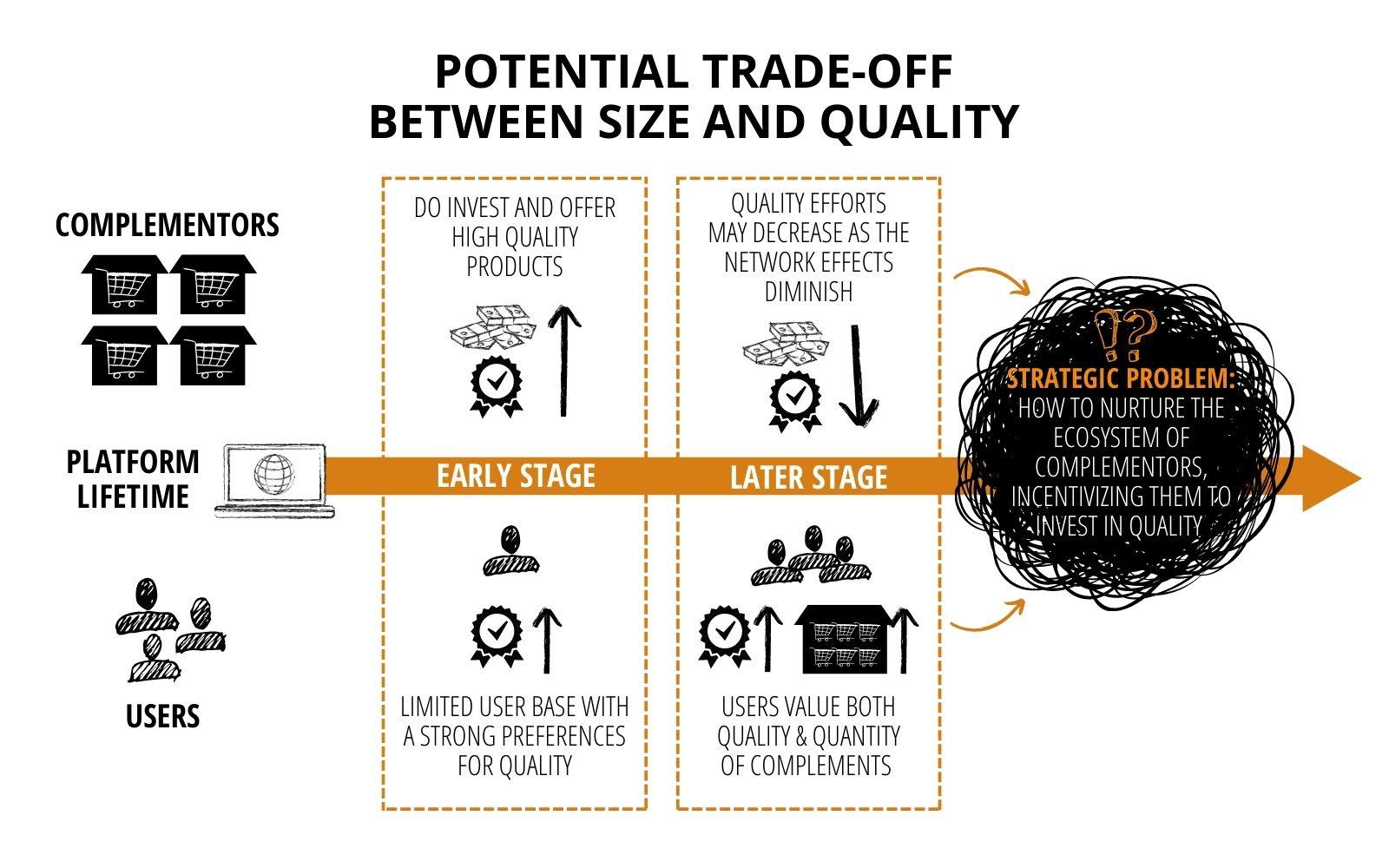Bocconi University (Italy) How to Nurture an Innovative Business Ecosystem

CLAUDIO PANICO AND CARMELO CENNAMO EXPLAIN THAT RECOGNIZING THE NEEDS OF DIFFERENT PARTIES AND ADJUSTING TO A PLATFORM ECOSYSTEM’S EVOLUTIONARY STAGE IS CENTRAL TO ITS HEALTHY DEVELOPMENT
How can a platform foster quality of a growing ecosystem? Is there a trade-off between quantity and quality? When might a tension between value co-creation and appropriation among ecosystem participants emerge? When do these tensions emerge along the ecosystem’s evolution? A paper by Claudio Panico of Bocconi’s Department of Management and Technology and Carmelo Cennamo of Copenhagen Business School, answers these questions.
The authors analyze the role of quantity and quality in determining demand-based economies of scale, and how they shape the strategic interactions between the platform and the complementors (ie, the providers of content, services, products). By modeling the platform’s choice of pricing for users and complementors, the authors identify the conditions for a trade-off between ecosystem quality and size, and when a tension between value co-creation and appropriation among ecosystem participants emerges. The authors further reveal the strategic implications for the different stages of the ecosystem’s evolution as users change their preferences for size and quality. For example, users with stronger preferences for quality might be more likely to join the platform at first, while later adopters will take into higher consideration the size of the ecosystem.
There are many clear examples of thriving platforms. Italy’s first unicorn, Scalapay, operates as a platform in a two-sided market. It offers a “buy now, pay later” service for thousands of merchants selling hundreds of product varieties, connecting them with a population of potential buyers. The success of Scalapay is therefore due to the ability to deliver value and thus attract participants in this two-sided market. The same business model underlies the functioning of the so-called Big Five (Alphabet, Amazon, Apple, Microsoft, and Meta) as well as companies that affect different aspects of our daily life (eg, Netflix, Spotify, Uber, etc.). These are all companies that maintain a key role in platform-centered ecosystems, connecting complementors and users.
Because of the central role they now play in the economy, platforms have received significant attention, with many studies emphasizing the importance of indirect network effects, especially for the initial formation of the ecosystem. Accordingly, platform ecosystems create more value for their users as the number of complementors grows larger, and complementors have greater incentives to join if there are more users. Yet, contrary to the belief that that network effects can trigger a self-perpetuating cycle of growth, diminishing returns to scale can limit the growth of platform ecosystems. Moreover, quality (meaning innovativeness and novelty) of complements is just as important as their quantity, if not more so, in attracting more users. In these cases, the strategic problem of how to nurture the ecosystem of complementors, incentivizing them to invest in quality and hence induce greater participation, becomes central.
Panico and Cennamo reveal new mechanisms and challenges that allow for a better understanding of platform-based ecosystems. “Complementors’ incentives to enter and invest in complements were assumed to grow over time with the growth of the platform market,” Claudio Panico explains. “However, this falls short of explaining why, in fact, complementors do invest and offer high quality products in the early stages when there is only a limited user base. A key learning point of our model is that platforms’ and complementors’ strategies, the potential trade-off between ecosystem size and quality, and the potential tension between value co-creation and value appropriation, all largely depend, both qualitatively and quantitatively, on users’ preferences for ecosystem quality and size.”
Panico C, Cennamo C. “User preferences and strategic interactions in platform ecosystems”, Strategic Management Journal 2022;43:507–529. https://doi.org/10.1002/smj.3149
by Andrea Costa


